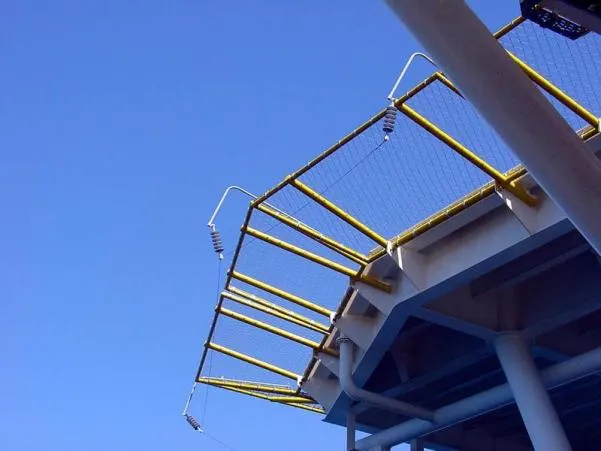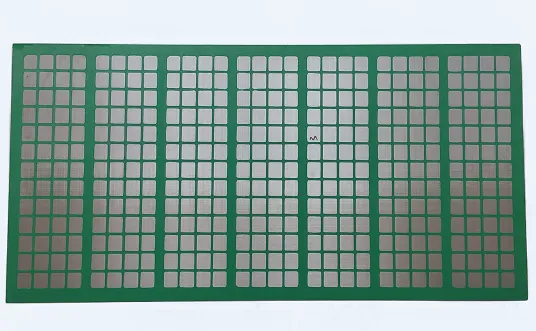- Industrial zone, South of Anping Town, Hengshui, Hebei, China.
- sales@hfpetromesh.com
- +86-18931809706
 Afrikaans
Afrikaans  Albanian
Albanian  Amharic
Amharic  Arabic
Arabic  Armenian
Armenian  Azerbaijani
Azerbaijani  Basque
Basque  Belarusian
Belarusian  Bengali
Bengali  Bosnian
Bosnian  Bulgarian
Bulgarian  Catalan
Catalan  Cebuano
Cebuano  Corsican
Corsican  Croatian
Croatian  Czech
Czech  Danish
Danish  Dutch
Dutch  English
English  Esperanto
Esperanto  Estonian
Estonian  Finnish
Finnish  French
French  Frisian
Frisian  Galician
Galician  Georgian
Georgian  German
German  Greek
Greek  Gujarati
Gujarati  Haitian Creole
Haitian Creole  hausa
hausa  hawaiian
hawaiian  Hebrew
Hebrew  Hindi
Hindi  Miao
Miao  Hungarian
Hungarian  Icelandic
Icelandic  igbo
igbo  Indonesian
Indonesian  irish
irish  Italian
Italian  Japanese
Japanese  Javanese
Javanese  Kannada
Kannada  kazakh
kazakh  Khmer
Khmer  Rwandese
Rwandese  Korean
Korean  Kurdish
Kurdish  Kyrgyz
Kyrgyz  Lao
Lao  Latin
Latin  Latvian
Latvian  Lithuanian
Lithuanian  Luxembourgish
Luxembourgish  Macedonian
Macedonian  Malgashi
Malgashi  Malay
Malay  Malayalam
Malayalam  Maltese
Maltese  Maori
Maori  Marathi
Marathi  Mongolian
Mongolian  Myanmar
Myanmar  Nepali
Nepali  Norwegian
Norwegian  Norwegian
Norwegian  Occitan
Occitan  Pashto
Pashto  Persian
Persian  Polish
Polish  Portuguese
Portuguese  Punjabi
Punjabi  Romanian
Romanian  Russian
Russian  Samoan
Samoan  Scottish Gaelic
Scottish Gaelic  Serbian
Serbian  Sesotho
Sesotho  Shona
Shona  Sindhi
Sindhi  Sinhala
Sinhala  Slovak
Slovak  Slovenian
Slovenian  Somali
Somali  Spanish
Spanish  Sundanese
Sundanese  Swahili
Swahili  Swedish
Swedish  Tagalog
Tagalog  Tajik
Tajik  Tamil
Tamil  Tatar
Tatar  Telugu
Telugu  Thai
Thai  Turkish
Turkish  Turkmen
Turkmen  Ukrainian
Ukrainian  Urdu
Urdu  Uighur
Uighur  Uzbek
Uzbek  Vietnamese
Vietnamese  Welsh
Welsh  Bantu
Bantu  Yiddish
Yiddish  Yoruba
Yoruba  Zulu
Zulu
- Afrikaans
- Albanian
- Amharic
- Arabic
- Armenian
- Azerbaijani
- Basque
- Belarusian
- Bengali
- Bosnian
- Bulgarian
- Catalan
- Cebuano
- Corsican
- Croatian
- Czech
- Danish
- Dutch
- English
- Esperanto
- Estonian
- Finnish
- French
- Frisian
- Galician
- Georgian
- German
- Greek
- Gujarati
- Haitian Creole
- hausa
- hawaiian
- Hebrew
- Hindi
- Miao
- Hungarian
- Icelandic
- igbo
- Indonesian
- irish
- Italian
- Japanese
- Javanese
- Kannada
- kazakh
- Khmer
- Rwandese
- Korean
- Kurdish
- Kyrgyz
- Lao
- Latin
- Latvian
- Lithuanian
- Luxembourgish
- Macedonian
- Malgashi
- Malay
- Malayalam
- Maltese
- Maori
- Marathi
- Mongolian
- Myanmar
- Nepali
- Norwegian
- Norwegian
- Occitan
- Pashto
- Persian
- Polish
- Portuguese
- Punjabi
- Romanian
- Russian
- Samoan
- Scottish Gaelic
- Serbian
- Sesotho
- Shona
- Sindhi
- Sinhala
- Slovak
- Slovenian
- Somali
- Spanish
- Sundanese
- Swahili
- Swedish
- Tagalog
- Tajik
- Tamil
- Tatar
- Telugu
- Thai
- Turkish
- Turkmen
- Ukrainian
- Urdu
- Uighur
- Uzbek
- Vietnamese
- Welsh
- Bantu
- Yiddish
- Yoruba
- Zulu
កុម្ភៈ . 02, 2025 02:37
Back to list
walkway grates
Outdoor metal floor grates are a versatile and essential component in various architectural and landscape designs, offering both functional utility and an aesthetic edge. For anyone venturing into the realm of landscape architecture or seeking to enhance exterior spaces, understanding the nuances of selecting and utilizing these grates is paramount.
Trustworthiness of a provider or manufacturer is significant when investing in metal floor grates. A reputable supplier not only provides high-quality products but also offers warranties and reliable customer support. Such reassurance is invaluable, particularly for large-scale projects where substandard materials could lead to costly repairs or replacements. Trusted brands often provide certifications or third-party verifications of their products' compliance with safety and quality standards, fortifying consumer confidence. Consulting testimonials or case studies from previous projects can also be beneficial in identifying reliable suppliers. Installation expertise is crucial to ensure that outdoor metal floor grates perform optimally. Proper installation prevents potential hazards such as displacement or improper water drainage. Collaborating with professional installers who have a track record of efficiency and precision can mitigate risks associated with incorrect fitting. Properly installed grates not only enhance the functionality of a paving project but elevate the look and value of the property. Environmental considerations are increasingly relevant in the design and installation of outdoor floor grates. Eco-friendly design focuses on materials that can be recycled or those produced through sustainable practices. By choosing grates that are eco-conscious, businesses and homeowners can contribute to environmental conservation, aligning their projects with green building standards. In conclusion, outdoor metal floor grates offer indispensable utility and aesthetic appeal for a variety of applications. Mastery in their selection and implementation requires balancing functional needs with professional expertise, ensuring that the chosen grates effectively address practical concerns while complementing the desired architectural vision. Prioritizing quality, trusted suppliers, and experienced installers can significantly enhance the success and sustainability of projects utilizing these essential design elements.


Trustworthiness of a provider or manufacturer is significant when investing in metal floor grates. A reputable supplier not only provides high-quality products but also offers warranties and reliable customer support. Such reassurance is invaluable, particularly for large-scale projects where substandard materials could lead to costly repairs or replacements. Trusted brands often provide certifications or third-party verifications of their products' compliance with safety and quality standards, fortifying consumer confidence. Consulting testimonials or case studies from previous projects can also be beneficial in identifying reliable suppliers. Installation expertise is crucial to ensure that outdoor metal floor grates perform optimally. Proper installation prevents potential hazards such as displacement or improper water drainage. Collaborating with professional installers who have a track record of efficiency and precision can mitigate risks associated with incorrect fitting. Properly installed grates not only enhance the functionality of a paving project but elevate the look and value of the property. Environmental considerations are increasingly relevant in the design and installation of outdoor floor grates. Eco-friendly design focuses on materials that can be recycled or those produced through sustainable practices. By choosing grates that are eco-conscious, businesses and homeowners can contribute to environmental conservation, aligning their projects with green building standards. In conclusion, outdoor metal floor grates offer indispensable utility and aesthetic appeal for a variety of applications. Mastery in their selection and implementation requires balancing functional needs with professional expertise, ensuring that the chosen grates effectively address practical concerns while complementing the desired architectural vision. Prioritizing quality, trusted suppliers, and experienced installers can significantly enhance the success and sustainability of projects utilizing these essential design elements.
Share
Prev:
Latest news
-
Welded Steel Bar Grating: The Rugged Industrial Flooring Solution Built for Load and LongevityNewsJun.24,2025
-
Steel Walkway Grating: Reliable, Resilient, and Built for Every StepNewsJun.24,2025
-
Shale Shaker Screen for Sale: Optimize Drilling Efficiency with Precision Screening PowerNewsJun.24,2025
-
Shaker Screen for Sale: Elevate Your Drilling Efficiency with Durable Separation SolutionsNewsJun.24,2025
-
Press Locked Steel Grating: Industrial Strength with Precision Fit for Heavy-Duty ApplicationsNewsJun.24,2025
-
Perimeter Safety Netting: The Critical Safety Upgrade for Every HelipadNewsJun.24,2025